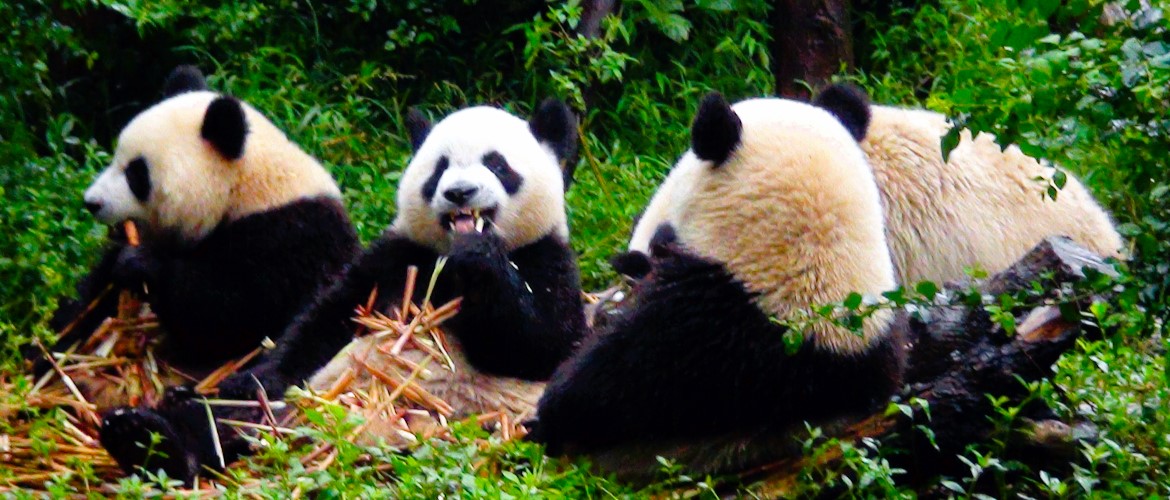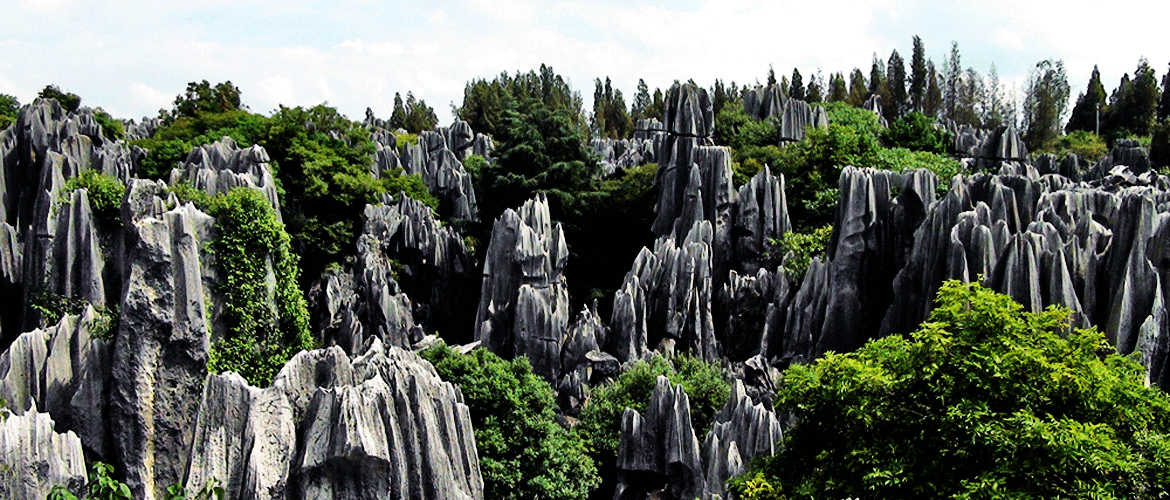Beijing – Kunming – Lijiang – Xianggelila– Chengdu – Shanghai
This luxury adventure tour focuses on Southwest China’s Yunnan Province and Chengdu. Blessed with stunningly beautiful landscapes and fascinating ethnic cultural heritage, Yunnan draws millions of tourists from across China every year. Chengdu, the capital of Sichuan Province, is viewed by many Chinese as the most desirable city to live in due to its mild climate, prosperity, modern infrastructure and fantastic food scene, among other things; a key attraction in Chengdu is its world-famous Research Base of Giant Panda Breeding.
Important Features
- Expert local guides hand-picked by company owners
- Small group size – average 15, maximum 20
- No annoying forced shopping stops
- Quality meals at non-tourist restaurants
- Unlimited supply of bottled water during group activities
- Free Wi-Fi in all hotels
- Great Wall visit at Mutianyu with cable car
Options Available
- Peking opera show in Beijing
- Face Mask Changing performance in Chengdu
- Half-day Jewish heritage tour in Shanghai
Meal Code: B = breakfast / L = lunch / D = dinner
Day 1/Sun: Departing for Beijing
The trip starts with your transpacific flight departing from a city of your choice. You’ll lose a day upon crossing the International Date Line.
Day 2/Mon: Arrival in Beijing
Meet the driver on arrival for transfer to the hotel. You’ll have the rest of the day at leisure.
Day 3/Tue: Beijing (B/L/D)
The capital of China, Beijing is a world-class cultural and educational centre with a population of 21.9 million (2020), ranking it China’s second largest city behind Shanghai. Beijing is renowned for its opulent palaces, temples, and huge stone walls and gates – treasures that make it the most popular tourist city in China by the number of visitors it receives every year.
We begin today with a visit to the Forbidden City. Officially known as the Palace Museum, the Forbidden City was the place where the emperors of the Ming (1368-1644) and Qing (1644-1912) dynasties lived and carried out their administration. Construction of the Forbidden City took 14 years (1406-1420) to complete. The complex consists of 980 buildings and covers 72 hectares or 180 acres. It exemplifies traditional Chinese palatial architecture and has influenced cultural and architectural developments in East Asia and elsewhere. Though the Qing Dynasty was overthrown in 1912, the royal family was allowed to continue to live in the Forbidden City till 1924, when the last emperor, Pu Yi, was driven out of the imperial palace. One year later the Forbidden City was turned into a museum. Declared a World Heritage Site by UNESCO in 1987, this is the largest collection of preserved ancient wooden structures in the world.
Next up is Tian’anmen Square. Located in the heart of Beijing, the square measures 880 metres from north to south and 500 meters from east to west. Said to be the largest public plaza in the world, Tian’anmen Square has the capacity to hold one million people. The imposing Tian’anmen Tower sits at the north end of the square while the Monument to the People’s Heroes dominates the centre. The square is flanked by The Great Hall of the People (west) and the National Museum (east). Chairman Mao’s Mausoleum and Qianmen (Front Gate) are located in the south of the square. One of the top 16 tourist attractions in Beijing, Tian’anmen Square is also the witness of the Chinese people’s great struggles for democracy and personal freedom since 1919.
Afternoon sightseeing takes place at the Temple of Heaven, another UNESCO World Heritage Site. Situated in southeastern Beijing, the Temple of Heaven is China’s largest extant sacrificial temple where, during the Ming and Qing Dynasties, the emperors conducted the elaborate and most exalted sacrifices addressed to “the Supreme Ruler of the Universe.” Construction of the temple started in 1406, during the reign of the Ming Emperor Yongle, and took 14 years to complete. The temple was expanded under the Qing emperors Qianlong (1736-1796) and Jiaqing (1796-1820). Occupying 2.73 square kilometres (roughly 1,700 by 1,600 metres), the area of the Temple of Heaven is more than twice that of the Forbidden City.
The famous Hongqiao Pearl Market, the largest pearl market in the world, is right across the street from the Temple of Heaven. Recommended by numerous guidebooks for freshwater pearls, Hongqiao teems with domestic and international shoppers. If you are interested, please ask the guide to drop you off there. However, you’ll need to get back to the hotel by taxi, which costs about 8 US dollars.
Today we enjoy a delicious dinner at a popular Peking Roast Duck restaurant. Peking Roast Duck is a famous Beijing dish prized for the thin and crispy skin with authentic versions serving mostly the skin and little meat, sliced in front of the diners. The meat is wrapped in a thin layer of pancake (Chinese tortilla) together with shredded scallion, cucumber, and a sweet and salty sauce made of wheat flour. Condiments may also include pickled garlic and white sugar.
Day 4/Wed: Beijing (B/L)
After an early breakfast we embark on a full-day excursion to the legendary Great Wall at Mutianyu, 75 km northeast of the city.
Zigzagging over 6,000 kilometres from east to west along the undulating mountains, the Great Wall was built to hold off tribal invaders from the north. As history shows, the Wall failed the Chinese rulers miserably, especially in the case of Kublai Khan who and his men swept across China from the Mongolian steppe, thus the beginning of the Yuan Dynasty (1279-1368).
Construction of the earliest sections of the Wall started in the 7th century BCE. A major renovation started with the founding of the Ming Dynasty in 1368 and took 200 years to complete. The wall we see today in Beijing is almost exactly the result of this effort.
Day 5/Thu: Beijing – Kunming (B/L/D)
We begin our sightseeing today with a visit to a traditional hutong neighbourhood. Hutong refers to an ancient alleyway with siheyuan or ”4-sided courtyard house” on both sides. The name hutong dates back to the Yuan Dynasty (1279 – 1368 CE). According to some experts, the word originated from the Mongolian language, in which it is pronounced as hottog and means “well.” In ancient times, people tended to gather and live around wells. So the original meaning of hutong should be “a place where people live around”.
Next on our schedule is the Summer Palace, a well preserved UNESCO World Cultural Heritage Site. The imperial resort was first named Garden of Clear Ripples, which was burnt down by the allied forces of Great Britain and France in 1860 at the end of the Second Opium War (referred to as Arrow War by the British). Reconstruction started 25 years later and was completed in 1895 when the name was changed to Yi He Yuan (Garden of Good Health and Harmony). The design gives prominence to Longevity Hill, as well as Kunming Lake south of the hill. The sprawling complex covers an area of 290 hectares and the buildings inside consist of over 3,000 bays.
The afternoon direct flight to Kunming takes 4 hours.
Day 6/Fri: Kunming – Stone Forest – Kunming (B/L)
Enjoy a full-day excursion to Stone Forest. Located 126km southeast of Kunming, the UNESCO World Heritage Site is a massive collection of gray limestone pillars created by water erosion. The tall rocks seem to emanate from the ground in the manner of stalagmites, with many looking like trees made of stone.
Day 7/Sat: Kunming – Lijiang (B/D)
Morning sightseeing includes the historic Western Hill Scenic Area and Huating Temple.
Early afternoon high speed train (3 hours) to Lijiang (2,400 metres/8,000 feet above sea level).
Lijiang is home to the ethnic Naxi people whose intriguing Dongba religion and unique customs coupled with the region’s enchanting scenery combine to make Lijiang and its vicinity a fascinating place to explore. Joseph Rock, the Austrian-American explorer, geographer, linguist and botanist, spent almost three decades researching this part of China. The old town of Lijiang known as Dayan is protected as a UNESCO-designated World Cultural Heritage Site.
Enjoy a walking tour of the old town before dinner (this may be moved to the next day depending on train schedule).
Day 8/Sun : Lijiang (B/L)
We begin today with an excursion to Yunshanping or Spruce Meadow, an alpine pasture surrounded by virgin forests at the foot of Jade Dragon Snow Mountain. While there, we’ll attend a live performance called Impression Lijiang. Directed by Zhang Yimou, Wang Chaoge and Fan Yue, Impression Lijiang is a song and dance extravaganza that takes place on location at 3,100 metres above sea level, in a spring-like city in Southwest China. Premiered on July 23, 2006, the hour-long show has been performed on a regular basis averaging over a million spectators per year.
Later today we visit an ancient village on the way back to the city.
Day 9/Mon: Lijiang – Xianggelila (B/L)
After breakfast we embark on an overland journey to Xianggelila, known as Shangri-La for westerners (3,160 metres/10,400 feet above sea level). The day-long drive covers 200 kilometres of country road snaking through scenic river valleys and high mountains dotted with villages of various ethnic nationalities. The highlight of the drive is a stop at the Tiger Leaping Gorge, the first bend of the Yangtze. The gorge is a 15-kilometre scenic canyon on the Jinsha River, a primary tributary of the upper Yangtze River. With a maximum depth of 3790 metres, the Tiger Leaping Gorge is believed to be the deepest river canyon in the world.
Day 10/Tue: Xianggelila (B/L/D)
In the 1933 novel Lost Horizon, the British author, James Hilton, describes Shangri-La as a mystical, harmonious valley, gently guided from a lamasery, enclosed in the western end of the Kunlun Mountains. Some scholars believe that the Shangri-La story owes a literary debt to Shambhala, a mythical kingdom in Tibetan Buddhist tradition, which was sought by Eastern and Western explorers. Because of this remote association, the local authorities in Yunnan applied to the State Council, the Chinese equivalent to the cabinet of a Western federal government, to have their county’s name changed from Zhongdian to Shangri-La (Xiangelila in Chinese pinyin) for the sake of tourism promotion. The application was approved in late 2001 and the name change soon went into effect.
We spend the morning exploring Pudacuo National Park. Stops include Bita Lake and Shudu Lake surrounded by virgin alpine forests. Designated as a national park on June 25, 2007, Pudacuo covers an area of 1,300 square kilometres. It is the first national park in China that meets the standards established by the International Union for Conservation of Nature. The park contains more than 20 percent of China’s plant species, about one-third of its mammal and bird species and almost 100 endangered species. It is notably home to vulnerable Black-necked cranes, many rare and beautiful orchids, and Himalayan Yew – a coniferous tree whose extracts are a source of the anticancer drug, paclitaxel.
Afternoon sightseeing takes in a Tibetan village, the Ganden Sumtseling Monastery and a local market. Located 5 kilometres from the town of Zhongdian, the Ganden Sumtsenling Monastery, also known as Sungtseling, is a Tibetan Buddhist monastery first built in 1679. Situated at 3,380 metres above sea level, it is the largest Tibetan Buddhist monastery in Yunnan province and is sometimes referred to as Little Potala Palace in reference to the Dalai Lama’s Potala Palace in Lhasa, Tibet.
Day 11/Wed: Xianggelila – Chengdu (B/D)
Free morning to explore on your own. We fly to Chengdu in the early afternoon. Depending on flight availability, we may need to fly to Chengdu in the morning. In that case, sightseeing will be arranged on arrival in Chengdu.
Chengdu is the capital of populous Sichuan Province. The ancient city has a population of 14 million with half of that within the urban centre and the remainder in the surrounding districts. The fertile Chengdu Plain, on which Chengdu is located, is also known as “Country of Heaven”, a phrase also often translated as “The Land of Abundance”. The discovery of the Jinsha site suggests the area of Chengdu had become the centre of the Bronze Age Sanxingdui culture around the time of the establishment of the state of Shu, prior to its annexation by Qin in 316 BCE.
Day 12/Thu: Chengdu (B/L)
Morning sightseeing at Chengdu Research Base of Giant Panda Breeding. The giant panda, unrelated to the red or lesser panda, is a bear native to south central China, living in mountainous regions. It is easily recognized by the large, distinctive black patches around its eyes, over the ears, and across its round body. Though it belongs to the order Carnivora, the panda’s diet is over 99% bamboo. The giant panda has an insatiable appetite for bamboo. A typical animal eats half the day – a full 12 out of every 24 hours – and relieves itself dozens of times a day. Giant pandas are solitary creatures. They have a highly developed sense of smell that males use to avoid each other and to find females for mating in the spring. After a five-month pregnancy, females give birth to a cub or two, though they cannot care for both twins. The blind infants, born fully white, weigh only 5 ounces (142 grams) at birth and cannot crawl until they reach three months of age.
The panda is a conservation reliant endangered species. Recent statistics (late 2022) shows 637 pandas living in captivity with most of them inside China. The most authoritative estimate as of late 2022 puts the number of giant pandas living in the wilderness at 1864.
We spend most of the afternoon at Jinsha Museum. In February 2001, construction workers chanced upon a significant archaeological discovery in modern China. The discovery led to the naming of Jinsha culture (1200 – 650 BCE) and a museum was erected at the excavation site. Jinsha culture flourished around 1000 BCE and shares similarities in burial objects with the Sanxingdui site located 50 km from Chengdu. Objects made of ivory, jade, bronze, gold and stone were unearthed at the site. Unlike the site at Sanxingdui, Jinsha did not have a city wall. Jinsha culture is believed to be a final phase of Sanxingdui civilization and represents a relocation of the political center in the ancient Shu Kingdom.
Day 13/Fri: Chengdu – Shanghai (B/L/D)
Free morning to explore on your own.
Afternoon sightseeing following lunch includes Wang Jiang Lou Park and a typical local tea house. Wangjianglou means “river-overlooking tower” and the park is so named because of the ancient pagoda-shaped wooden tower onsite. The beautiful little park dotted with verdant bamboo groves has long been a favourite spot among locals for leisure.
We travel to Shanghai by late afternoon or evening flight.
Day 14/Sat: Shanghai (B/L/D)
With a population of 24.9 million (2021), Shanghai is China’s largest city, which delights the visitor with its futuristic skyline and historical landmarks. As China’s leading gateway to the world, Shanghai plays a prominent global role as a hub of commerce, finance, cultural exchange, fashion, technology and transport.
We begin our day with a visit to Jade Buddha Temple located in an old neighbourhood. Later on we tour the famous waterfront promenade known as the Bund, and the Yu Garden in the old town centre. We wrap up the day with a drive through the glitzy financial district of Lujiazui on the opposite side of the Bund across Huangpu River.
Day 15/Sun: Shanghai (B)
Free day to explore on your own. We recommend Shanghai Museum and the Urban Planning Exhibition Center nearby. Shanghai Museum houses a huge collection of precious national treasures and is frequently cited by visitors as one of the best of its kind in China.
Day 16/Mon: Returning Home (B)
Your tour ends this morning. Transfer to the airport any time for return flight. Guests flying back to North America will regain a day upon crossing the International Date Line, thus arriving home the same day as departing from Shanghai.
| City | Nights | Hotel | Category |
| Beijing | 3 | New Otani Chang Fu Gong | luxury |
| Kunming | 2 | Sofitel Kunming | luxury |
| Xianggelila | 2 | Paradise Hotel | luxury |
| Lijiang | 2 | Hilton Garden Inn | luxury |
| Chengdu | 2 | Sofitel Chengdu Taihe | luxury |
| Shanghai | 3 | Amara Signature Shanghai | luxury |
Dates & Prices
discount available
| Depart (Sun) |
Return (Mon) |
Land Only* CA$/US$ |
Single Supplement CA$/US$ |
| 2024 | |||
| 13-Oct | 28-Oct | $6,750/$4,999 | $1,999/$1,490 |
| 03-Nov | 18-Nov | $6,750/$4,999 | $1,999/$1,490 |
* Land Only price does not include international airfare. Please contact us for a fare quote.
|
What the tour price includes:
|
What the tour price excludes:
See Terms & Conditions for more information. |



